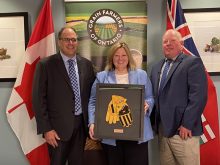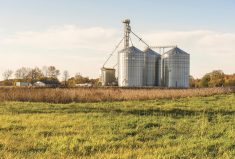Approximately $14 million has been allocated by the federal government and industry partners to a cross-province grain research cluster, with the intention of developing more productive — and more resilient — grain varieties for Canadian farmers.
Industry representatives say the investment, as well as funding commitments from organizations within the grains sector, are important for maintaining the competitiveness of Canadian grains and ensuring farmers have access to diverse crop options.
Why it matters: The latest federal investments are designed to address resiliency and productivity issues common across the country, and get new corn, soybean, and oat varieties to farmers.
Read Also

Ontario’s agri-food sector sets sights on future with Agri-Food 2050 initiative
The first-ever Agri Food 2050, a one-day industry event dedicated to envisioning the future of food and farming in Ontario,…
Funding breakdown
Grain Farmers of Ontario (GFO) is one of many provincial organizations involved with the Canadian Field Crop Research Alliance (CFCRA) — a national organization pursuing opportunities to improve Canadian field crop genetics. As a whole, the group accessed federal funding under the Canadian Agriculture Partnership’s AgriScience Program.
Two Agriculture and Agri-Food Canada announcements in recent weeks have confirmed a five-year federal investment in corn, soybean and oat research totaling $9.5 million; an additional $4.9 million is coming from industry, with GFO contributing approximately $2 million of that amount.
According to Josh Cowan, research and innovation manager for GFO and current vice-president for CFCRA, this is an increase in grain research funding from the $10.2 million combined public-industry investment seen under Growing Forward 2. This increase, he says, corresponds with an expansion in the overall research scope and geographic coverage.
The benefits to farmers, says a recent GFO press release, will be multifold. GFO will lead in three project areas:
- Corn: Developing germplasm with resistance to diseases, advanced nitrogen management strategies for farmers that will enhance productivity and environmental performance, and early-maturing cold-tolerant corn genetics.
- Oats: Developing higher-yielding disease-resistant varieties for eastern Canada, improved nutritional performance, nitrogen management and seeding rate recommendations, and implementing new support tools in oat breeding programs.
- Soybeans: Developing improved identity-preserved and food-grade varieties with improved disease-resistance, improved yield, and greater cold tolerance.
Wheat and barley research clusters have also received funding and are being led by other CFCRA members elsewhere in the country.
Ontario priorities
Cowan says GFO is particularly interested in the wider development of food grade soybeans. Improving nitrogen management — and specifically nitrogen use efficiency in corn as part of a general focus on 4R nutrient management — is another.
Achieving these and other goals, he adds, is getting easier as researchers across Canada can better leverage expertise, resources, and research dollars. This also helps speed-up the rate of development overall.
“These collaborative initiatives started in 2010. We’re in the third round,” says Cowan. “We’re becoming more and more linked as the years go on across Canada.”
Common priorities between provinces
Salah Zoghlami, president of CFCRA and agronomic affairs advisor for Producteurs de grains du Quebec — the organization representing Quebec’s grain growers — says developing more fusarium-resistant grains is a priority for his province’s producers; high-yielding short season soybean varieties is another.
“What is interesting is the cluster and growers are focusing on some research areas that have less support and are less attractive for private companies,” says Zoghlami.
Like Cowan, he says pursuing better genetics as a national rather than provincial community helps reduce research overlap while maximizing results. When asked how CFCRA selects research priorities given the diversity of provincial needs, Zoghlami says achieving consensus can be tricky. However, there are still many common denominators that everyone can agree on.
He adds research does not occur in a vacuum; the knowledge gained from advances in one crop type can be subsequently applied to other areas of research.















